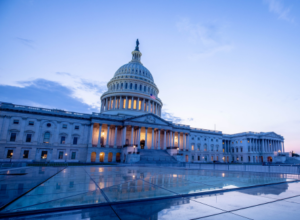
December 19, 2017
Tax Reform and Tax-Exempt Bonds: Legislative Update
On Friday, December 15, 2017, conference committees in the House and Senate agreed upon a final version of the Tax Cuts and Jobs Act (the “Act”). Today, the House voted to approve the legislation. Senate leaders plan to follow this evening or tomorrow morning, so that the President can sign the Act before Christmas. The initial House version of the Act included various provisions of concern to the tax-exempt bond community. (A summary of the initial House version can be found here.) Some – but not all – of the concerns are addressed in the final bill, as described below:
Tax-exempt bond provisions remaining in the Act include:
- Repeal of the tax-exemption for advance refunding bonds, effective January 1, 2018. Although there had been a push to preserve tax-exempt advance refunding bonds, or at least to delay the effective date of any repeal, the Act prohibits the issuance of tax-exempt advance refunding bonds after December 31, 2017.
- Repeal of Tax Credit and Direct Pay Bonds, effective January 1, 2018. The Act repeals the few remaining qualified tax credit and direct pay bonds still being issued (such as new clean renewable energy bonds and qualified energy conservation bonds).
However, other financing tools that looked to be in jeopardy in early versions of the legislation came through the process unscathed:
- Tax-exempt private activity bonds are preserved in full. Tax-exempt bonds for multifamily and single family housing, private colleges, hospitals and other 501(c)(3) projects, airports, docks and wharves, small issue manufacturing projects, and other projects eligible for private activity bond financing will continue to be available after December 31, 2017. Issuers and borrowers rushing to draw down existing private activity bonds before year end can stand down if the Act becomes law before then. Potential amendments affecting volume cap and the carry forward of volume cap were not included in the final Act.
- Low-Income Housing Tax Credits remain intact, although changes impacting the program are still being analyzed by the tax credit community.
- No additional limitations on “stadium bonds” are included in the Act. The House version of the legislation would have prohibited the issuance of tax-exempt bonds to finance or refinance a facility used for more than five days per year as a stadium or arena for professional sports exhibitions, games, or training. The language was so broadly written that it implicated city, university or other public sports facilities used occasionally for professional sports. The Act does not include these limitations on stadium bonds.
- New Markets Tax Credits (“NMTCs”) are preserved. NMTCs remain subject, however, to periodic reauthorization. The Act preserves existing authority for NMTC allocations for 2017, 2018 and 2019. The Act also preserves 20-percent historic tax credits, with some modifications that may reduce their value to project sponsors, and a transition rule.
If the Act is signed into law, the law may trigger additional sequestration under the Statutory Pay-As-You-Go Act of 2010 (“PAYGO”). As a result of the Act, the federal deficit is expected to increase significantly, which would trigger statutory sequestration under PAYGO unless waived by Congress. Statutory PAYGO sequestration (beyond the now typical, annually announced sequestration levels that already affect Build America bonds and other direct pay bonds under the Budget Control Act of 2011) is a possibility. Congress may, however, act to prevent what could be a 100% sequester rate for Build America bonds and other direct pay bonds. Absent a waiver, other programs also would be affected. Many are of the view that Congress would feel compelled to act to prevent cuts to Medicare and other programs subject in whole or part to the statutory PAYGO sequestration procedures. Please contact any of our public finance attorneys with questions regarding the tax reform bill and its implications for tax-exempt bonds.


